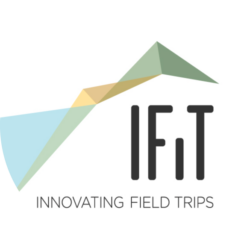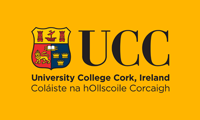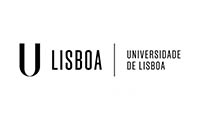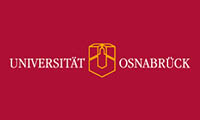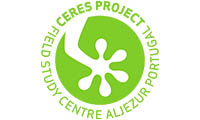Blog
IFiT Student Field Trip May/June 2019 (Blog 4- Eduardo Ribeiro)
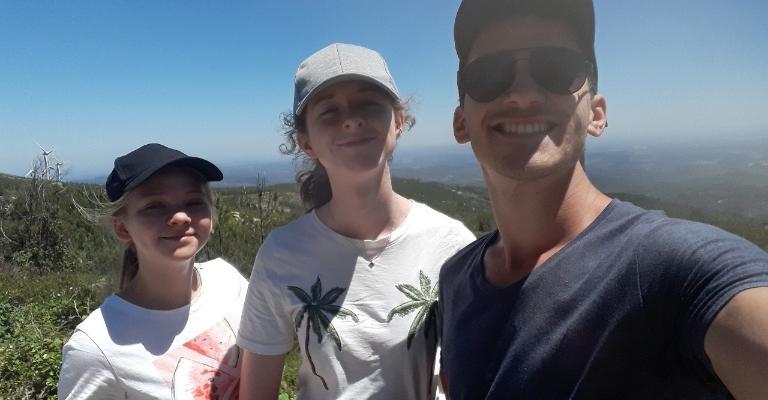
First, let me introduce myself, my name is Eduardo Ribeiro, I’m 23 years old and I’m about to finish my degree in Geology by the Faculty of Sciences of the University of Lisbon. I was informed of this project through my college and I thought “two weeks with everything paid in Aljezur? Count me in! “, I applied, and surprisingly, I was accepted.
So it started my 2 week adventure in Aljezur…
After a tedious 4 hours bus ride i was greeted by Dr. Astrid Blum and Axel Bemberger with open arms and quickly felt at ease, from the first day we were shown the places of study, and the next day we would have to choose where we would want to work and with whom.
I chose the Cerca Valley and ended pairing up with two Irish students from the University of Cork, Claudia Barry (Zoology) and Phoebe Walsh (Earth Sciences).
Thus, the “Valley Girls” were born! Not that I had much to say.
But speaking of scientific things…
The river!
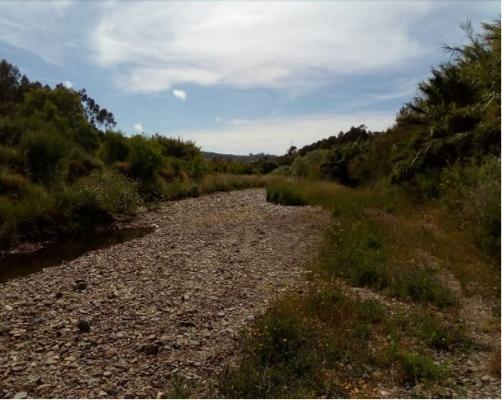
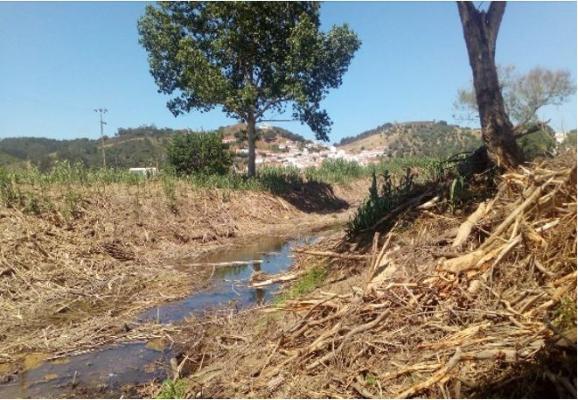
Dry areas of the river near Aljezur
The Aljezur river is an important component for the village, once a port where large boats docked easily, today it is difficult to pass a kayak through certain parts. It is noticed that upstream the river gains more flow, however, downstream loses prominence and evaporates. One factor that contributes to this is the immense amount of debris and sediments that falls into the river, changing the profile of the river, stagnating its circulation, eventually evaporating during the warmer months.
This has a particularly biological impact since a watercourse without circulation is likely to stagnate, not renewing its oxygen, allowing algae and other species to accumulate.
Our work is, therefore, to verify the quality of the water along the river and to propose solutions that will lead to its improvement.
Over the course of the two weeks the routine was quite similar, waking up at 8am, going to the field at 9am, and we would normally be coming home around 3pm. All transportation to the study sites was done by Axel and Astrid.
In the first two days we were accompanied by two professors from the University of Cork, Fidelma Butler and Allen Whitaker, giving us ideas regarding the methodology we should use for this work.
Our work would be based primarily in kick sampling, this is to disturb the substrate in order to collect organisms present in the water, this way it is possible to ascertain the quality of the water where we are. It is in these parts that the IFiT project stands out, interdisciplinarity “forces” you to learn about different fields of study and to also consolidate your own.
Something that we would also do is to calculate the flow of the river. It is an easily obtainable parameter, however it is also quite error-prone. We measure the width of the river, the average depth, thus obtaining the area of the river.
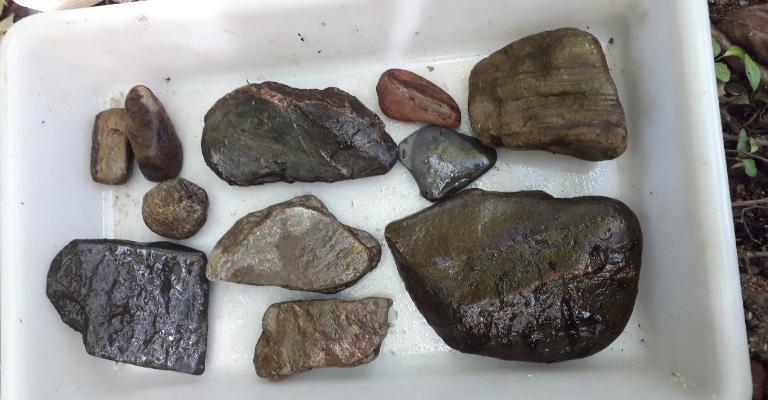
Pebbles gathered from the river bed
Then it is necessary to calculate the speed of the river, for this we define a segment of known length and measure the time that an object takes to go through that segment. After this is simple, we multiply the area by velocity and obtain the flow. In order to obtain a more relevant result, we can multiply this result by a correction factor of 0.85, since the water in the river travels at different speeds depending on its depth.
Moreover, we measured the length, width and sphericity to infer regarding the transport the pebbles were subjected to.
In this case we find that the rocks found are mainly Greywackes, Slate, Syenites and Quartz, which makes sense considering the local lithology.
Some parameters commonly used in Geology are measured, such as the attitude of the rocks, slope of slopes and the lithology of the region.
For the time being the results we have obtained are as expected, the quality of the improves upstream, this is mainly due to the increased shade provided by denser vegetation, a more inclined profile, increasing the water flow and, above all, the absence of anthropological activity.
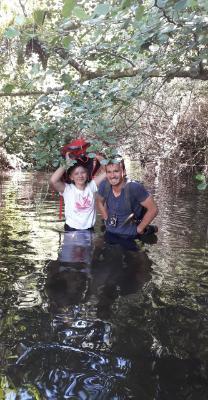
The water level didn’t help much either
It is to say though, that everything in life has its obstacles, this work was no different, the absence of previous data, scientific papers and overall informations regarding water management of the area made geological interpretation quite hard (for me).
Some other obstacles we found was the increasingly denser vegetation the further upstream we went.
Conclusion
In short, the IFIT project is something I am glad to have been part of, I feel that I have improved as a Geologist, I feel I did relevant work and above all I made new friends, tried new food and learned to live with about 15 people the same house.
Oh, if you’re a cleaning maniac like myself and you’re expecting a tidy house 24/7 then let me warn you, you will feel desperate.
That being said, the fact that I spent two weeks at a beach house does not mean that I was on holiday for two weeks, during the day the main concern was to do the field work and at the end of the day was the data processing … of course there is always some time for a beer, or two …
I can only thank my faculty for giving me this opportunity and above all to Astrid and Axel who were great in these two weeks, doing everything possible so that we would not go hungry, always keeping the pantry full and taking us to all the necessary places to carry out the work.
With this said…
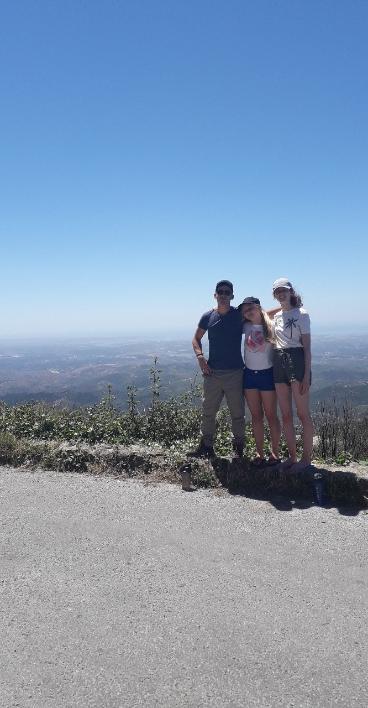
The “Valley Girls” in Monchique
Eduardo Ribeiro, signing out

Bem-vindos ao meu primeiro blogpost de sempre e a um dos primeiros blogposts do projeto IFit – Inovating Field Trips, este curso de campo engloba 3 universidades diferentes, a Universidade de Lisboa, Universidade de Cork e a Universidade de Osnabruck, tendo como enfase a interdisciplinaridade entre Biologia, Geologia e Geografia.
Mas primeiro, deixem me apresentar-me, o meu nome é Eduardo Ribeiro, tenho 23 anos e estou prestes a acabar a minha licenciatura em Geologia pela Faculdade de Ciências da Universidade de Lisboa.
Fui informado deste projeto a partir da minha faculdade e pensei “duas semanas com tudo pago em Aljezur? Contem comigo!”, candidatei me e surpreendentemente fui aceite.
Então lá começou a minha aventura de 2 semanas em Aljezur…
Após uma viagem de 4 horas fui recebido pelos Doutores Astrid Blum e Axel Bemberger de braços abertos e rapidamente me senti à vontade, logo a partir do 1º dia foram nos apresentados os locais de estudo, sendo que no dia seguinte teríamos que escolher onde iriamos querer trabalhar e com quem.
Escolhi a área do Vale da Cerca e fiquei com duas estudantes irlandesas da Universidade de Cork, Claudia Barry(Zoology) e Phoebe Walsh(Earth Sciences).
E assim foram criadas as “Raparigas do vale”! Não que eu pudesse dizer algo contra isso.
Mas falando de coisas científicas…
O rio!
O rio de Aljezur é uma componente importante para a vila de Aljezur, em tempos sendo um porto onde barcos de grande dimensão atracavam facilmente, hoje torna-se difícil fazer passar um kayak por certas partes. Repara-se que a montante o rio ganha mais caudal, no entanto, a jusante perde destaque e evapora. Um fator que contribui para isto é a imensa quantidade de detrito e entulho que cai para o rio, mudando o perfil do rio, estancando a sua circulação, eventualmente evaporando durante os meses mais quentes.
Isto tem um impacto sobretudo biológico visto que um curso de água sem circulação é propicia a estagnar, não renovando o seu oxigénio, deixando algas e outras espécies acumularem.
O nosso trabalho consiste, portanto, na verificação da qualidade da água ao longo do rio e propor soluções que levem à sua melhoria.
Ao longo das duas semanas a rotina era bastante semelhante, acordar às 8 da manhã, ir para o campo às 9 e normalmente estaríamos a voltar para casa por volta das 3 da tarde. Todo o transporte para os locais de estudo foi feito pelo Axel e pela Astrid.
Nos primeiros dias fomos acompanhados por dois professores da universidade de Cork, Fidelma Butler e Allen Whitaker, dando-nos ideias da metodologia que deveríamos usar para este trabalho.
Ao pararmos numa estação a primeira coisa que fazemos é kick sampling, isto consiste em perturbar o substrato de modo a conseguirmos colher organismos presentes na água, deste modo é possível averiguar a qualidade da água no sítio onde nos encontramos. São nestas partes que o projeto IFit se destaca, a interdisciplinaridade obriga-nos a adquirir conhecimentos relativamente a outras áreas enquanto consolidas os conhecimentos da tua própria.
De seguida é necessário calcular a velocidade do rio, para isto definimos um segmento de comprimento conhecido e medimos o tempo que um objeto demora a percorrer esse segmento. Depois disto é simples, multiplicamos a
área pela velocidade e obtemos o caudal. De modo a obter um resultado mais relevante, podemos multiplicar este resultado por um fator de correção de 0,85, uma vez que água não viaja toda à mesma velocidade, dependendo da sua profundidade.
De resto, algo que fazemos é a medição do material acarretado pelo rio e a sua esfericidade, deste modo obtemos uma noção do transporte que sofreram e a sua proveniência. Neste caso verificamos que as rochas encontradas são sobretudo Grauvaques, Ardósia, Sienitos e Quartzitos, o que faz sentido tendo em atenção a litologia local.
Medem-se certos parâmetros normalmente usados em Geologia, como a atitude das rochas, inclinação de vertentes e a litologia da região.
Por enquanto os resultados que obtivemos são conforme o esperado, a qualidade da água tem vindo a melhorar, isto deve-se sobretudo ao aumento da vegetação, conferindo mais sombra, a um perfil mais inclinado, aumentando o caudal da água e sobretudo à ausência de atividade antropológica.
Como tudo na vida, a realização deste trabalho também teve os seus obtáculos, a ausência de dados, trabalhos científicos e informação relativamente à geologia e hidrogeologia dificultaram imenso a interpretação geológica (para mim).
A vegetação cada vez mais densa também constituiu um obstáculo à medida que caminhávamos cada vez mais para montante.
Conclusão
Em suma, o projeto IFIT é algo do qual estou contente por ter feito parte, sinto que melhorei como Geólogo, sinto que fiz trabalho relevante e acima de tudo fiz novas amizades, experimentei comida nova e aprendi a viver com cerca de 15 pessoas na mesma casa.
Já agora, se forem obcecados com limpeza e organização como eu e estão à espera de conseguir manter uma casa limpa 24/7, então deixem me avisar-vos, vão desesperar
Dito isto, o facto de ter passado duas semanas numa casa de praia não significa que tenha tido duas semanas de férias, durante o dia a principal preocupação era realizar o trabalho de campo e ao fim do dia era o tratamento de dados…claro que há sempre algum tempo para uma cerveja, ou duas…
Apenas posso agradecer à minha faculdade por me ter proporcionado esta oportunidade e sobretudo à Astrid e ao Axl que foram ótimos nestas duas semanas, fazendo todos os possíveis para que não passássemos fome, mantendo sempre a dispensa cheia e levando-nos a todos os locais necessários para a realização do trabalho.
Com isto dito…
Eduardo Ribeiro, a despedir-se

